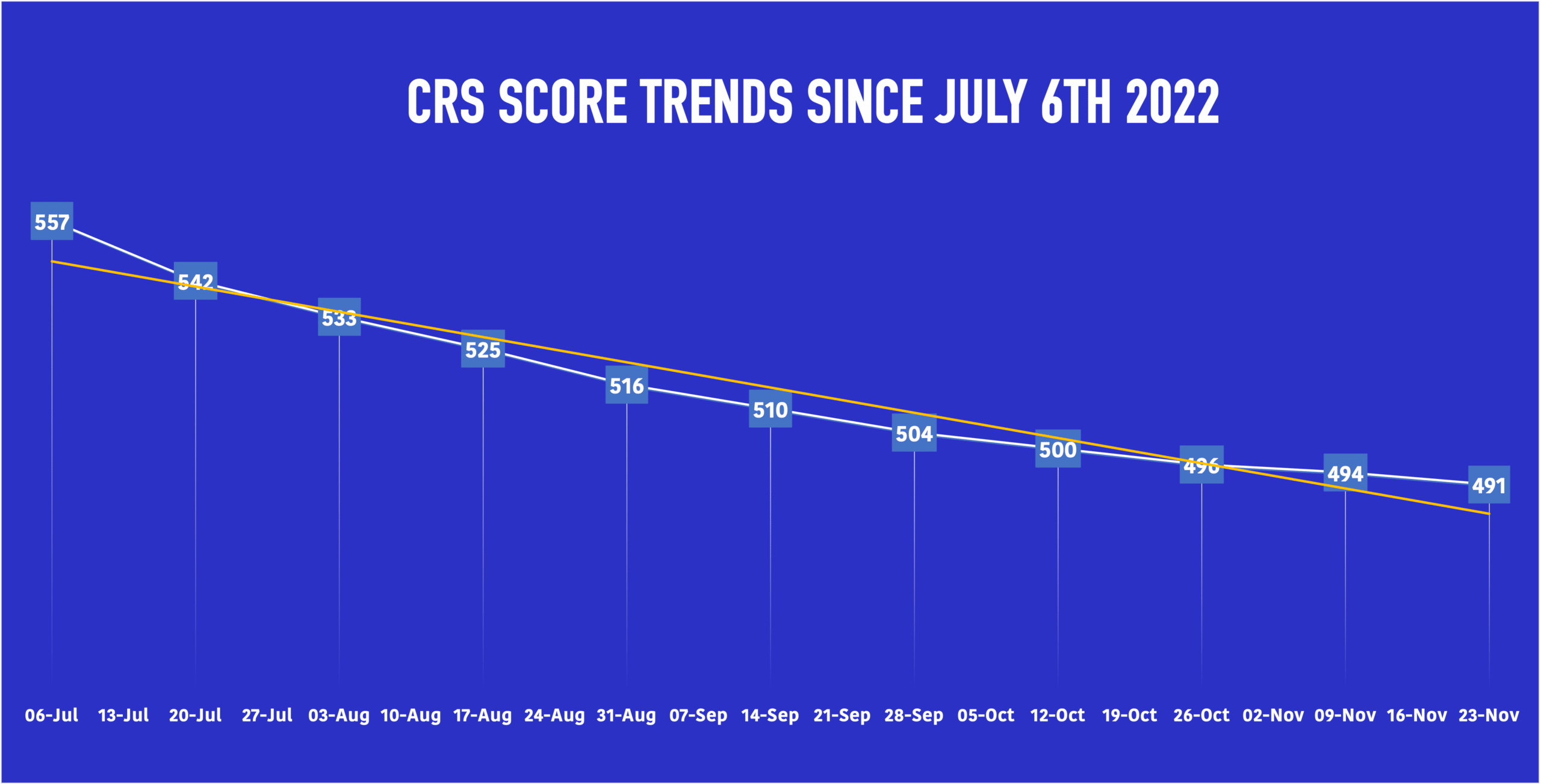This July marked the return of the Express Entry system for the federal skilled worker class, as Canada invited skilled immigrants from overseas for the first time since 2020.
There are three programs managed by the Express Entry system:
Invitations to Apply (ITAs) are issued to candidates within the Express Entry pool on the basis of their Comprehensive Ranking Score (CRS).
Roughly every two weeks, Immigration Refugees and Citizenship Canada (IRCC) issues ITAs to candidates in the Express Entry pool who meet the CRS cut-off. This year, all Express Entry draws have been common, choosing candidates for FSWP and CEC.
CRS in 2022
On 6 July the IRCC reintroduced the Express Entry draw, inviting 1,500 candidates from the Express Entry pool who had a CRS score of at least 557.
As the draws continue throughout the year, the IRCC will increase the size of the draw (eventually 4,750 candidates in the most recent draw), while the CRS will reduce the cut-off to below 500.
As Canada grapples with the post-COVID reality, labor shortages remain across the country. Canada has identified immigration as a primary means by which it can meet immediate economic needs; The return of Express Entry and a progressively decreasing CRS score in 2022 could be a reason.
Can we use past scores to predict future CRS?
At first glance, predicting future CRS scores based on past cut-offs may seem a relatively simple task. However, in reality the situation is more complex.
The problem with using past CRS scores to predict the future is the lack of a clear pattern in how CRS cut-offs change. The graph below maps the CRS cut-offs to their respective draws. Although we can see a negative correlation, we cannot accurately map future CRS scores here, as there is no consistent decline in cut-offs, from draw to draw.

Note here how the trend line (yellow) deviates from the true-score gradient (white). This is due to erratic drop-off in CRS (ie: 15 points drop between 6th July to 20th CRS, however only 3 points dropped between 9th November to 23rd CRS cut-off). If these declines were consistent, then predicting CRS scores for the future would be very simple.
Further statistical analysis shows that the standard deviation (the amount by which each score deviates from the mean) among the Express Entry CRS cut-offs in 2022 was 21.6 points. As any candidate in the Express Entry pool can attest, that’s a huge margin for error in forecasting.
Another important reason why it is not a good way of predicting CRS is because of some policy regimes that affect the cut-off score.
What affects the CRS score cut-off?
First, and perhaps most importantly, the IRCC has complete control over what CRS cut-off should be applied. This means that the department is under no obligation to follow patterns or trends; Instead, freedom was given to choose the CRS cut-off and invite immigrants based on the economic needs of Canada.
Arguably the most dramatic example of this was in February 2021, when the IRCC invited 27,000 new immigrants as part of the CEC, with a CRS cut-off of just 75 – the lowest in the history of Express Entry.
Another factor to keep in mind is the increase in CRS score cut-off due to some types of applications already being processed. For example, with increased provincial enrollment through a Provincial Nominated Program (PNP), candidates in the Express Entry pool can earn an additional 600 CRS points from just their provincial nomination.
Similarly, candidates in the CEC often have both Canadian education and Canadian work experience; Two factors that can dramatically increase the CRS score, and thus skew the cut-off, for the entire Express Entry pool.
future of crs
While we can’t be sure exactly what the upcoming CRS cut-off will be, there is an important policy change coming in 2023 that will have a big impact on the CRS’s supposed impact on immigration: Bill C-19.
Passed in June of 2022, the bill allows the immigration minister the ability to create groups (based on policy objectives) within the Express Entry pool and issue ITAs to candidates within that group.
The IRCC has already expressed its intention to extend this measure into 2023, to help address direct economic needs by targeting businesses with specific demanding occupations.
Under Canada’s Immigration Level Plan, the country is expected to welcome 203,220 new immigrants under Express Entry-managed programs between 2023 and 2025.
© CIC Updates All Rights Reserved. Visit Worldoverseasimmigration.com to find your Canadian immigration options.
